How does it work?
Prescribed fires are executed in a number of ways. Some fire management agencies will find a natural firebreak, such as a river, lake, or road, from which they set a downwind backfire. This creates a line where low-intensity ignitions will stop. In some cases, aerial ignition is executed with a helicopter dropping small pellets that are filled with a substance that slowly ignites after landing on the ground. In flat terrain, large sections are burned off from a natural firebreak using a portable fire torch.
As soon as a prescribed fire is ignited, resources patrol control lines and mop up hot spots as necessary. Active patrol of the control lines will continue until the prescribed fire is completed, and even periodically in the following months to ensure there are no remaining smoke or reignited hot spots.
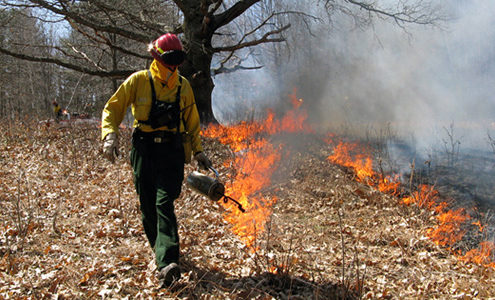
Firefighter using portable fire torch in planned burn.
Benefits of Prescribed Burns
The intentional burning of fuels is one of the best tools that help prevent wildfires as well as manage the intensity and spread of wildfires. In addition to supporting wildfire management, there are numerous environmental benefits.
• Reduce hazardous or excessive brush, shrubs, and trees
• Recycles nutrients into soil, promoting the growth of new life
• Preserves plant and animal species
• Minimizes threat of invasive pests insects and disease
Challenges of the Prescribed Burn
Like with any fire, there are inherent risks to the burn. Smoke can have negative short-and long-term effects on human health and the environment. There are ways to monitor and reduce the impact of smoke from prescribed burns. Many state and local fire departments have voluntary or mandatory smoke management guidelines including, planning direction of the smoke plume and identifying smoke-sensitive areas. Though when conditions are wrong, prescribed fires can do more damage to the environment it was meant to benefit.
Even the best fire agencies have had planned prescribed burns get away from them. Burn plans are determined by considering humidity, wind, moisture of the vegetation, and temperature to best decide the right time and day to burn. The plan must also include contingency strategies in case the fire escapes. Despite planning, liability is a concern should a prescribed burn get out of hand. While prescribed burns are largely proven effective and safe, concerns have caused agencies and landowners to fear financial and legal responsibility should the fire escape control.
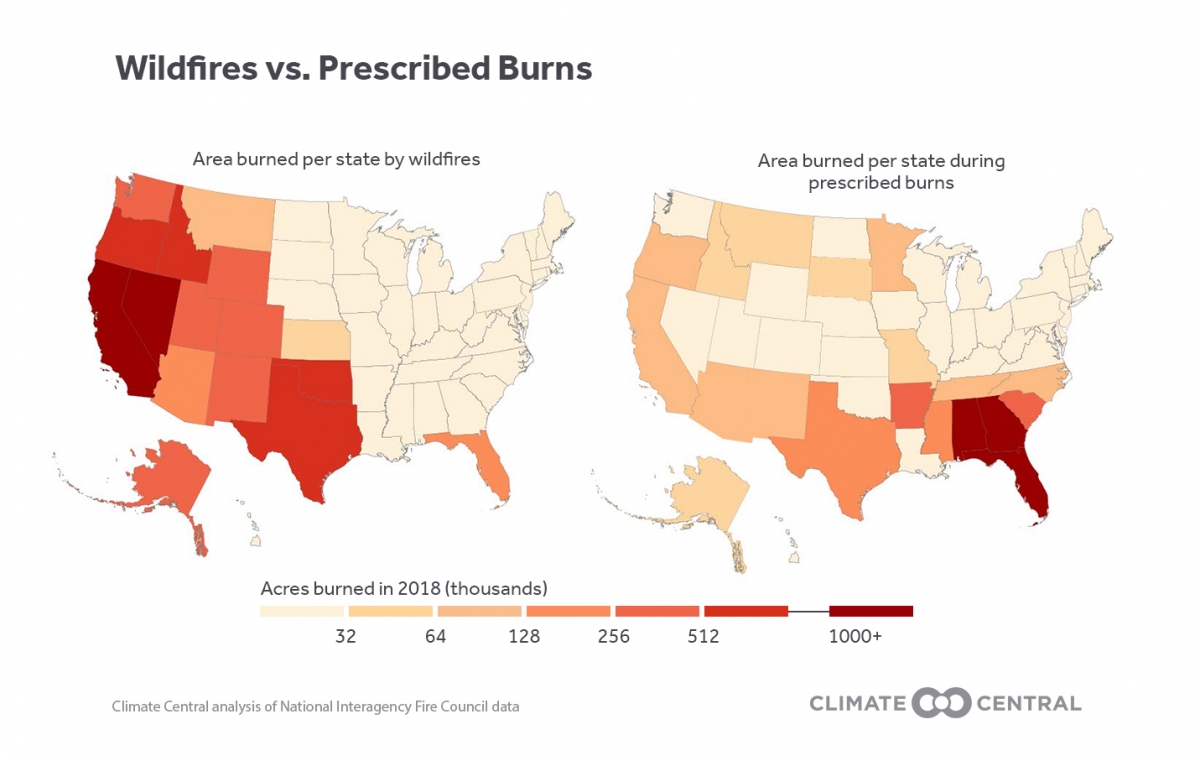
Comparison of Area Burned by Wildfire vs. Prescribed Burns.
What’s next?
Insufficient funds, struggles to find suitable “burn windows” in an unpredictable climate, and public fear do make it difficult for prescribed burns to gain momentum in reducing wildfire risk. Land managers remain consistent in focusing efforts and funds on fire suppression rather than prescribed burns treatment. As the climate warms and wildfires becoming more intense, land managers will need to find support for prescribed fires nationwide.
Sources:
https://www.nps.gov/
https://www.climatecentral.org/
https://smokeybear.com/

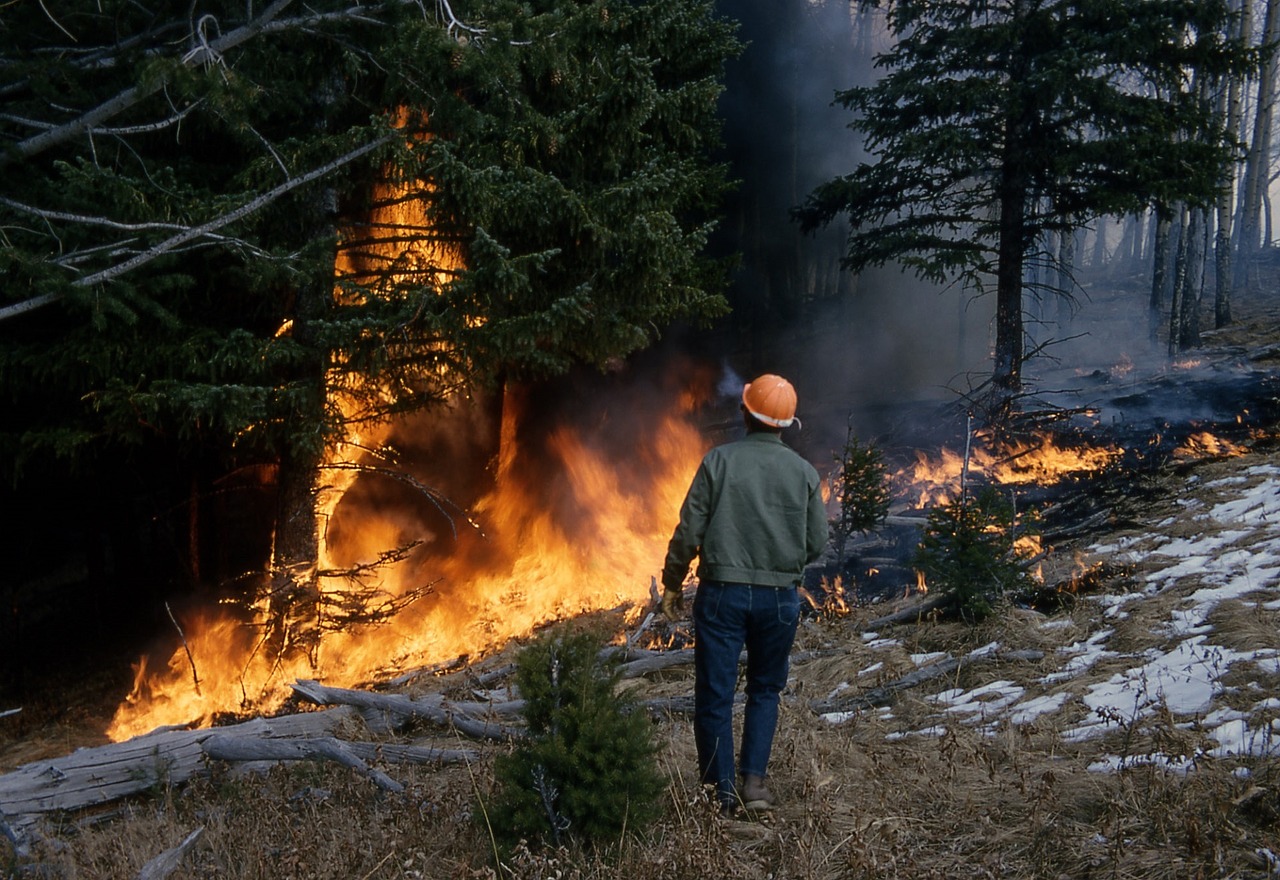
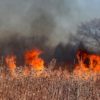
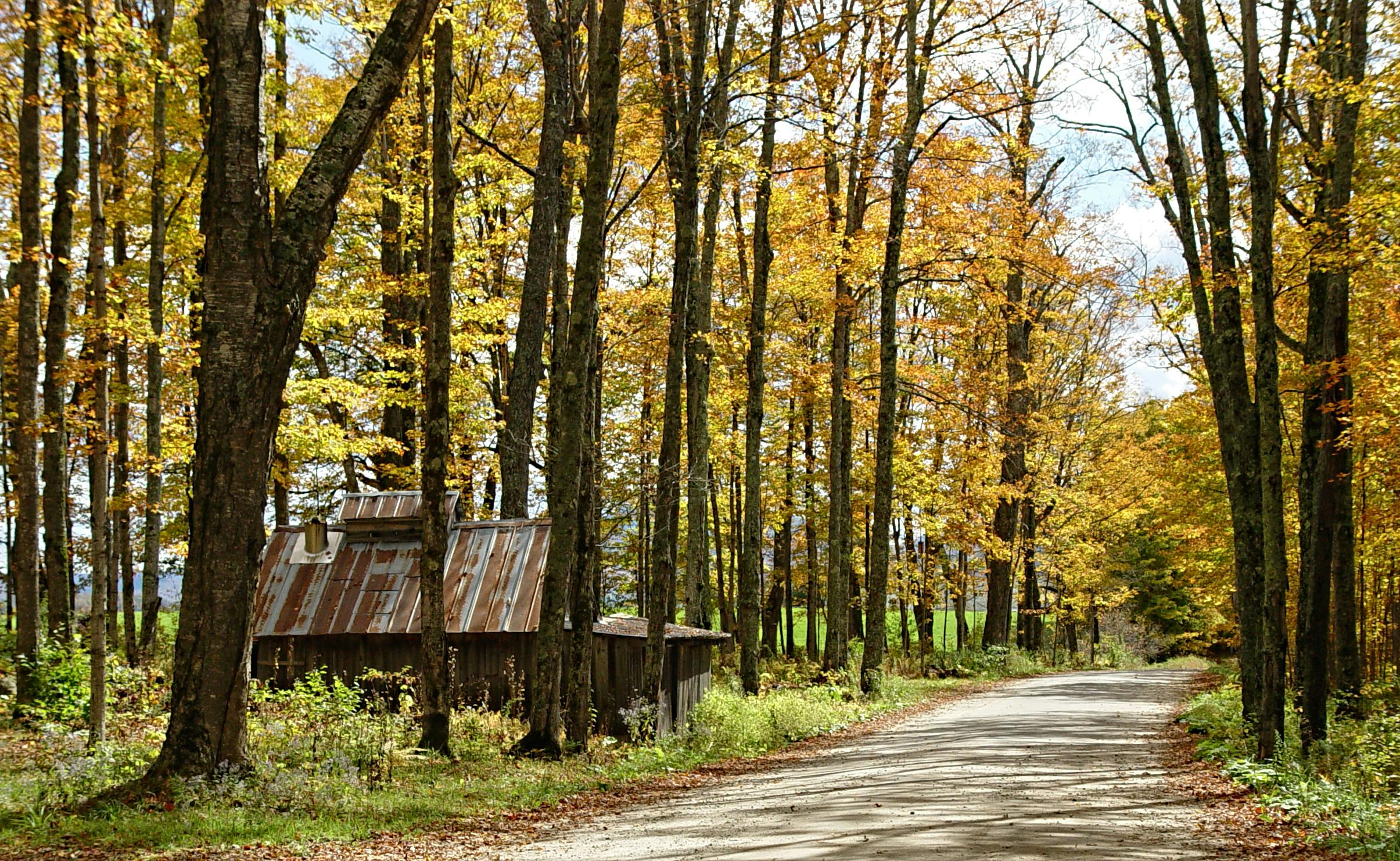
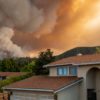
One Comment